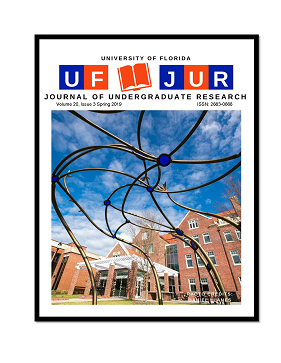I am Here. Where Are All the Other (Straight White) Male Dancers?
DOI:
https://doi.org/10.32473/ufjur.v20i3.106289Keywords:
Dance, gender, race, sexuality, straight, white, men, social danceAbstract
In the demographics of the American dance world—both professional and social—one group appears to be underrepresented: straight white men. Despite being the second largest group of Americans and over-represented in many other fields of endeavor, they are proportionally the least represented in social dance. Those men that do dance often began later in their lives than their female peers. Why are so many straight white men missing-in-action on the dance floor; and why, despite boundaries built by social pressure and a lack of enthusiasm or desire to change that fact, do some of “us” slip through and onto the floor? Through oral accounts, personal experience, and literature research, the research examines why so many men refuse to dance, and the motivations of those men that do dance—like me.
References
Albright, Ann Cooper, and Ann Dils. Moving History / Dancing Cultures a Dance History Reader. Wesleyan University Press, 2001.
Chang, Heewon. Autoethnography as Method. Autoethnography as Method, Left Coast Press, Inc., 2008.
Craig, Maxine Leeds. Sorry I Don't Dance: Why Men Refuse to Move. Oxford University Press, 2014.
Ellis, Carolyn, et al. “Autoethnography: An Overview.” Historical Social Research/Historische Sozialforschung, vol. 36, no. No. 4, 2011, pp. 273–290., www.jstor.org/stable/23032294.
Fisher, Jennifer, and Anthony Shay, editors. When Men Dance: Choreographing Masculinities across Borders. Oxford University Press, 2009.
Gard, Michael. Men Who Dance: Aesthetics, Athletics and the Art of the Masculinity. P. Lang, 2006.
Jonas, Gerald. Dancing: the Pleasure, Power, and Art of Movement. Abrams, 1998.
Renfroe, Tyler, et al. “What is Your History as a Dancer?” 22 Dec. 2017.
U.S. Department of Commerce. “Population” U.S. Census Bureau QuickFacts, 1 July 2017, www.census.gov/quickfacts/fact/table/US/PST045217#viewtop.
Downloads
Published
Issue
Section
License
Some journals stipulate that submitted articles cannot be under consideration for publication or published in another journal. The student-author and mentor have the option of determining which journal the paper will be submitted to first. UF JUR accepts papers that have been published in other journals or might be published in the future. It is the responsibility of the student-author and mentor to determine whether another journal will accept a paper that has been published in UF JUR.

